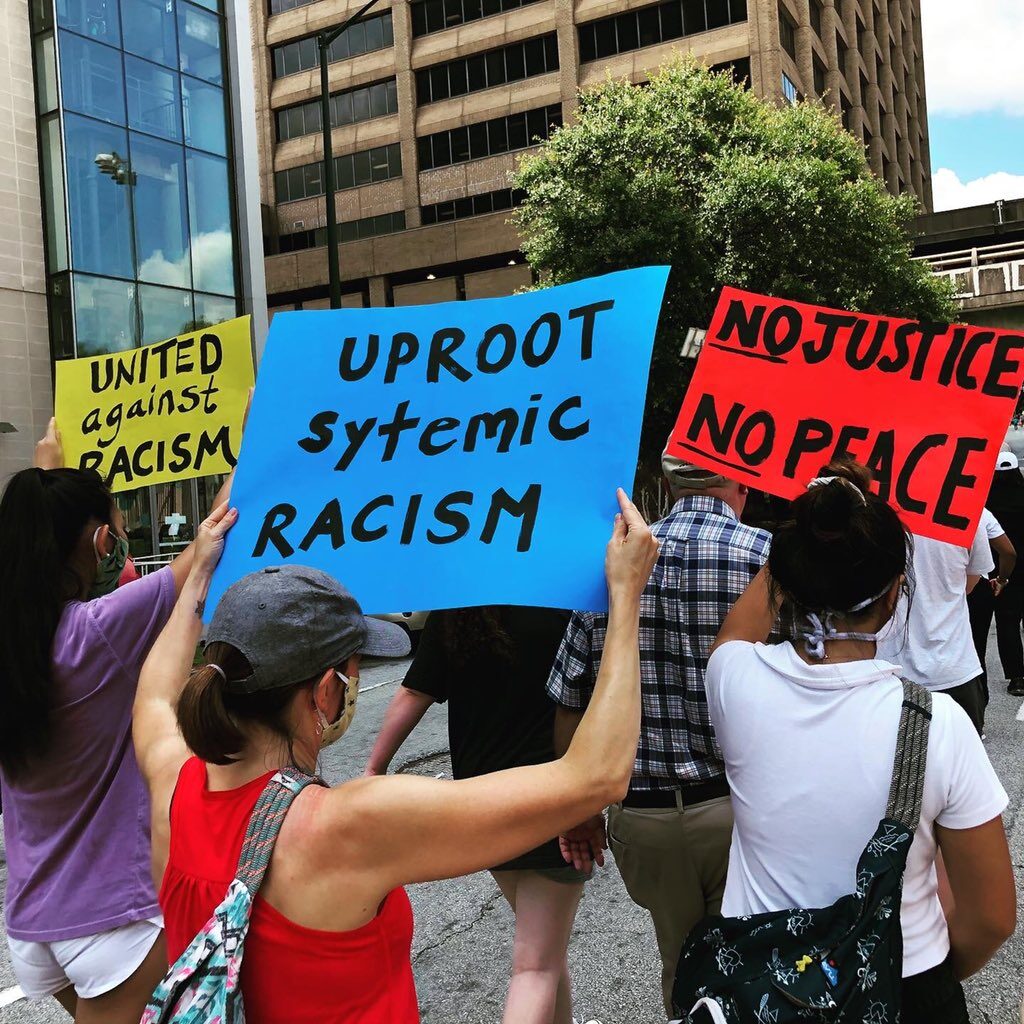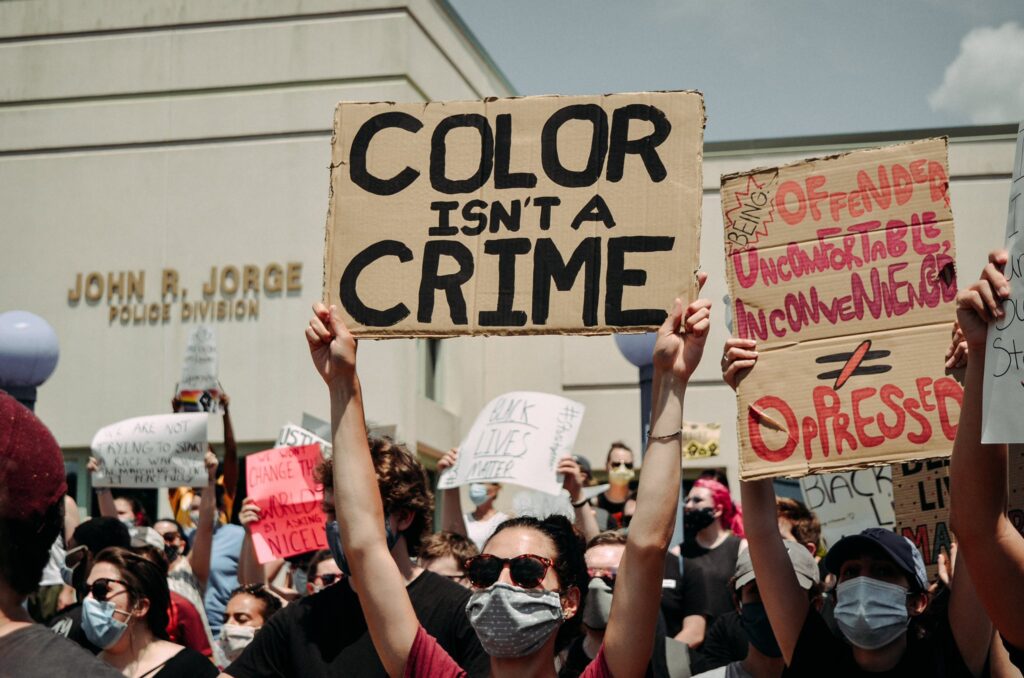
Private racism is invisible to all but the perpetrator and its victim.
It is the private incidents of racism endured by millions of Black Americans for hundreds of years that resonate with so many.
The public racism made viral by video captured violent acts including the George Floyd murder, the more recent Rayshard Brooks killing and the call to actions now following the 2019 death of Elijah McClain have sparked protests worldwide calling for police reform and radical change. But these public protests cannot address what can happen one-on-one, behind closed doors.
As a Black woman undergraduate at Ohio University, majoring in journalism in 1978, I did not become a double major in music and journalism as I had intended. During the freshman orientation process, a white graduate student advisor who was registering new admissions disdainfully informed me that I couldn’t do both.
I was too young and inexperienced to push forward with my own vision of life, so I made a choice. Since I had been writing for longer than I had been playing the piano, journalism won out.
It didn’t register to me then as a racist moment, but there was something belittling, almost sneering in the eyes of the person who told me that. That look has remained with me to this day—as if it were ridiculous that I could even have imagined such a thing for myself.
Then, in my junior year, when I began my actual journalism classes, I was given an advisor, as was everyone. Never having had an advisor before, I didn’t know what to expect. It didn’t matter to me that she was white and I was not. My meetings with her were generally uncomfortable, and I thought this was because she had a generally uncomfortable personality.
She never smiled or warmly welcomed me. She didn’t ask me any questions about my plans for the future, or engage me in any way. She always met me with the same stone cold face and manner, and a hard, expressionless blue gaze.
“What courses do you want to take?” she would ask when I came to register classes for the next quarter.
I would list my choices. She would mark them down. And that would be it.
One day, however, when I arrived in her office, she seemed visibly angry, and her eyes flashed. We began in the usual way, and then mid-way through the meeting, she stopped.
“You won the Mademoiselle magazine contest,” she said accusingly, glaring at me from behind her dark-rimmed glasses.
She seemed to want something from me that I couldn’t decipher, so I answered cautiously, not sure where this was going.
“Yes, I did,” I said carefully.
I had entered an essay contest two years before, with the prize of a spot on the now-defunct magazine’s College Board. It also offered eligibility to compete later for a salaried week in New York working at Condé Nast, its publisher.
I looked at her quizzically. She seemed to want something, but I was at a loss to know what.
She was still eyeing me aggressively.
“We’ve only had one of those,” she practically yelled at me, her eyes flashing again.
She made me feel that I had stolen something. But what did I steal? I had sent in an essay, they had liked it, and it had won. Where was the thievery in that? Why wasn’t she congratulating me? I would have thought she would think it a good thing to have won such a prize.
Later, I understood much better. I was near her office on another day, and saw in passing that her door was ajar. Suddenly, however, I noticed my advisor was with a blonde female student, and she was laughing and smiling in a way I had never before seen. The blonde student was laughing too, and very excited.
“Well, if you take that,” my advisor was saying, “it won’t help you to move forward with your project. I think you’ll be better prepared if you take Communication, and then Magazine Advertising.”
I stood for a long time in that hallway, fascinated, watching the scene before me and trying very hard to understand. Though I could not express it at the time, that girl was getting something to which I had no access: critical knowledge that would immeasurably help her to advance in her future career.
I walked away, taking with me the consciousness that though I was paying the same price, I was not getting the same education as were others around me.
Racism kills in many ways beyond physical death, and what I experienced describes what that looks like. It can kill dreams, aspirations, hope, families, communities and souls among those who still breathe—those who are breathing while Black.
Unless we commit to recognizing and stamping out this private racism too, there cannot be, as Beneatha in Lorraine Hansberry’s “A Raisin in the Sun” so aptly puts it, “…any real progress…only one large circle that we march in.”

Across the globe, protestors against public racism continue with relentless vigor, screaming for justice, demanding change, insisting that they will continue until that justice is served and such change is won.
Videos showing the killing and abuse of Black men and women have put the painful truth of racism baldly before the public eye, and shocked the nation and the world with their raw violence and degradation.
They have forced all to open both eyes and ears to the egregious and impoverishing reality that racism engenders, by showing what is human touch devoid of humanity. They are the visible files in an archive of centuries of public violence.
These are stupefying events. But so many more individuals are touched every day by the ubiquitous unrecorded and private racism that occurs outside public knowledge, racist encounters with no videotaped record and for which no collective global gasp is ever heard.
Unless we can identify and put a stop to such private racist acts—the racism that happens when and where there is no one to see—we can make legal and policy changes, and these will still only touch the surface of racism’s injustice not only in America, but across the world.
Just as wearing a mask in the pandemic world is a daily necessity when venturing outside one’s own environment, so being aware of and sensitive to one’s own participation in racist behaviors and working to end them is equally important.
Both are a recognition of shared humanity and the shared responsibility to self and others.



